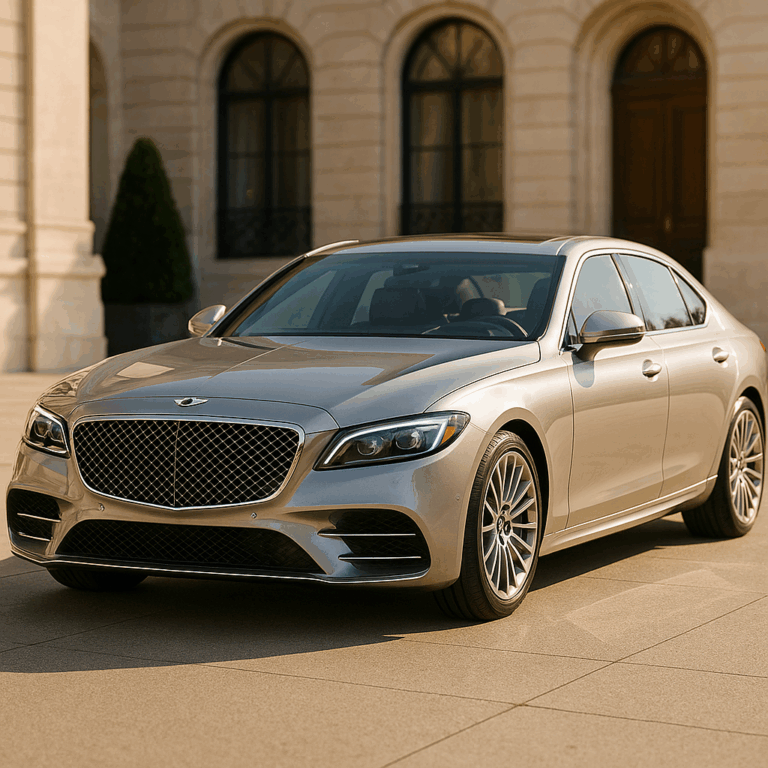Is Gap Insurance Worth It for New and Used Cars?
Last Updated: September 11, 2025
Overview: Is GAP Insurance a Smart Investment?
When asking, “Is GAP insurance worth it?”, you’re delving into a strategic safeguard designed to protect drivers from a financially perilous moment: when the value of their car crashes faster than their loan balance. By bridging the difference between what your primary auto insurer pays (the vehicle’s Actual Cash Value, or ACV) and what you still owe, it ensures you don’t walk away in financial distress if your vehicle is totaled or stolen. While it’s not a necessity for every car owner, for many, it represents a crucial layer of financial protection.
Several key factors determine if GAP insurance is worth it for you:
- Your Down Payment: Smaller down payments often mean a larger initial “gap.”
- Loan Term: Longer loans (60+ months) can keep you “upside-down” for an extended period.
- Vehicle Depreciation Rate: New cars, luxury models, and EVs depreciate faster, increasing the need for GAP.
- Your Financial Situation: Can you comfortably cover a potential several-thousand-dollar gap out-of-pocket?
By exploring these factors in detail, this guide will help you determine the true value of GAP insurance for your new or used car.
Quick Insights: Key Factors Influencing the Value of GAP Insurance
| Insight | Why It Matters for Your GAP Insurance Decision |
|---|---|
| New cars can depreciate by ~20–30% in the first year, followed by 8–12% annually. | This rapid depreciation creates a significant and growing loan-to-value gap that GAP insurance is specifically designed to protect against. |
| The vehicle segment is crucial—luxury cars have seen depreciation rates around ~18%, while vans have been closer to ~20% in recent years. | Depreciation varies significantly by vehicle type, meaning certain models are inherently higher-risk for negative equity. |
| Electric Vehicles (EVs) may lose nearly 59% of their value in five years. | EVs represent a high-depreciation category where GAP insurance adds considerable value and peace of mind. |
| The GAP insurance market is projected to grow from $4.5 billion to $8.8 billion by 2035. | This reflects rising consumer awareness of depreciation risks and a growing demand for financial protection. |
| Insurer-provided GAP costs are significantly lower than dealership offers; brokers often provide the best overall pricing. | This is a key component of a value-conscious protection strategy, allowing you to get the same coverage for less. For more on costs, see our article on GAP insurance monthly costs. |
1. Why GAP Insurance Is Critical for New Car Buyers
For new car buyers, the need for GAP insurance is often at its most acute. This section unpacks the financial mechanics behind why new vehicles are so susceptible to a significant “gap,” highlighting the forces that can put new car buyers at risk and how GAP insurance serves as an essential buffer.
From the moment you drive your new car off the dealership lot, your investment begins to lose value at an accelerated rate. It’s a well-documented phenomenon: a new vehicle typically loses 20–30% of its value in the first year alone, followed by a slower but still significant depreciation of 8–12% per year (Kelley Blue Book). This rapid depreciation is the primary driver of negative equity.
When your car is declared a total loss, your primary auto insurer’s payout is based on the vehicle’s Actual Cash Value (ACV) at the time of the incident, not what you originally paid for it or what you still owe. This ACV often falls short of your loan balance, especially in the early years of your loan, leaving you personally responsible for the difference. GAP insurance is specifically designed to bridge this shortfall, protecting you from paying thousands of dollars out of pocket for a car you can no longer drive.
The “gap” is often exacerbated by modern car financing practices, such as:
- Low Down Payments: Many new car buyers put down less than the recommended 20%, meaning they start their loan with minimal equity.
- Extended Loan Terms: Loans of 60, 72, or even 84 months are now common, which means you build equity much more slowly as your early payments are heavily weighted towards interest.
- Taxes and Fees: Rolling taxes, registration fees, and other charges into your loan further inflates the initial loan balance relative to the car’s sticker price.
All these factors contribute to a larger and longer-lasting “gap,” making GAP insurance a highly valuable investment for new car owners. For more information on comprehensive protection, consider exploring our auto insurance solutions.
2. Who Needs GAP Insurance the Most?
While GAP insurance can be beneficial for many, not every driver benefits from it equally. This section helps pinpoint the specific scenarios where GAP coverage becomes most relevant and provides the greatest value—whether you’re financing with little equity, dealing with long-term loans, or driving a high-depreciation vehicle.
GAP insurance is especially valuable if you:
- Financed with a small down payment (less than 20%): This is one of the most significant indicators of need. A small down payment means you start your loan with a larger “gap,” which can take years to close.
- Chose a 60–84 month loan term: Longer loan terms delay equity buildup. While your monthly payments are lower, you remain “upside-down” for a longer period, making GAP coverage more critical.
- Rolled over negative equity from a trade-in: If you traded in a car that was worth less than what you owed on its loan and rolled that debt into your new car loan, you have a significant “gap” from day one. GAP insurance is highly recommended in this scenario.
- Drive vehicles that depreciate quickly: As noted earlier, certain vehicle types lose value faster than others. Full-size vans (–19.8% depreciation in a year), luxury SUVs (–16.5%), and EVs are prime examples of high-depreciation vehicles where GAP coverage provides substantial protection.
- Lease your vehicle: GAP insurance is often mandatory for leased vehicles because you never build equity in a lease. The leasing company requires it to protect their asset.
3. What Experts & Market Trends Reveal About GAP Insurance
The rising relevance and value of GAP insurance are not just anecdotal; they are supported by third-party authority, including insurance bodies, consumer protection agencies, and market analysts. Here’s what they have to say:
- Insurance.com strongly endorses GAP for high-risk financing situations, such as when you have a small down payment or a long-term loan (Insurance.com).
- MoneyGeek frames GAP as essential protection for when your car’s depreciation outpaces your loan repayment schedule (MoneyGeek).
- The Insurance Information Institute (III) confirms that GAP’s primary role is to cover the loan-to-value gap after a total loss, highlighting its importance in modern auto financing (III.org).
- The GAP insurance market is booming, with projections indicating it will rise from $4.5 billion in 2025 to $8.8 billion by 2035, with a 7% compound annual growth rate (CAGR) (Future Market Insights). This reflects a growing consumer awareness of the risks of negative equity.
- Bankrate emphasizes how external economic factors like inflation and high interest rates are currently widening the risk gap for new car buyers, making GAP insurance more relevant than ever (Bankrate).
4. Real-World Depreciation Data & Market Context
To fully appreciate the value of GAP insurance, it’s helpful to look at real-world data and market context. This section brings these examples to life, exploring segment-wise depreciation data, the unique case of EV value loss, and the influence of the used-car market, all of which underscore the need for timely GAP protection.
- Depreciation Varies by Vehicle Type: According to recent data, depreciation rates can vary significantly. Full-size vans can lose nearly 20% of their value in a year, luxury crossovers around 16.5%, and average cars about 12.5% (Diminished Value of Georgia). Understanding your specific vehicle’s depreciation risk is key.
- The EV Factor: Electric vehicles, while technologically advanced, can lose up to 59% of their value within five years, making them a high-depreciation category where GAP insurance is particularly valuable (AIBME).
- The Used Car Market: In recent years, the average price of a used car has climbed significantly, with some reports showing averages around $30,522. When buyers finance these higher-priced used cars, especially with longer loan terms, they can still face a significant “gap,” reinforcing the cost-justification of GAP insurance even for pre-owned vehicles (Washington Post).
5. Cost Comparison: Insurer vs. Dealer vs. Third-Party
The cost of GAP insurance can vary dramatically depending on where you purchase it. This section lays out the cost dynamics plainly—from the low-cost annual options available through insurers to the higher one-time payments from third parties and the premium financing traps at dealerships—to help you budget smartly and get the best value.
- Insurer/Bundled GAP: This is typically the most affordable option, often costing between $20–$60 per year. This usually breaks down to about 5–6% of your annual collision and comprehensive premium (Investopedia).
- Third-Party Providers: Some standalone third-party providers offer GAP insurance for a one-time fee, often in the range of $200–$300.
- Dealership GAP: This is almost always the most expensive option, with steep upfront costs of $500–$700 (or even more). This fee is often financed into your car loan, meaning you’ll pay interest on it, further increasing the total cost over time.
6. Consequences of Opting Out When GAP Would Have Helped
Opting out of GAP insurance when you’re in a high-risk situation can have severe financial consequences. This section illustrates the worst-case scenarios: when insurer ACV payouts don’t cover your loan balance, leading to potential legal collection actions and significant financial strain that GAP could have easily avoided.
Without GAP insurance, if your car is totaled:
- You are personally and legally liable for the difference between your insurer’s payout (the car’s ACV) and what you still owe on your loan.
- That debt remains—even if the car no longer exists. You could be making payments for months or years on a vehicle you can’t drive.
- Lenders may pursue collections, and your credit could suffer (Investopedia).
Next Steps: Protect Your Purchase
To ensure you’re adequately protected, consider the following next steps:
- [Get a Custom GAP Quote] – You might be surprised to learn that GAP coverage can start at around $20 per year.
- Compare provider options—always get quotes from your primary auto insurer, a specialized broker, and the dealership to see the true cost difference.
- Monitor your loan-to-value ratio—once you’ve achieved positive equity, you can cancel your GAP coverage and save money.
—
Disclaimer: This article is for informational purposes only and does not constitute financial or insurance advice. Coverage details, state laws, and policy requirements vary. We encourage you to consult with our qualified, licensed insurance professionals to review your specific needs and circumstances.
Ready to assess your GAP insurance needs or discuss policy options? Fill out the form below to connect with a Hotaling advisor today.


